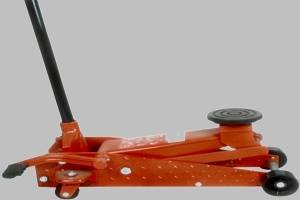Home Page Safety Info Tool Info Tools for Sale What is This? Contact Me Useful Links

Hydraulic Powered Tool Safety
The fluid used in hydraulic power tools must be an approved fire-resistant fluid and must retain its operating characteristics at the most extreme temperatures to which it will be exposed. The exception to fire-resistant fluid involves all hydraulic fluids used for the insulated sections of derrick trucks, aerial lifts, and hydraulic tools that are used on or around energized lines. This hydraulic fluid shall be of the insulating type.
The manufacturer’s recommended safe operating pressure for hoses, valves, pipes, filters, and other fittings must not be exceeded.
Keep in mind that hydraulic powered tools are able to produce an extreme amount of pressure. Any time you are working with such a tool you must be extra careful to make sure everything is lined up properly and is stable. Be sure the surfaces are free of any oil which may cause a tool to slip and present a hazard to yourself or others.
All jacks—including lever and ratchet jacks, screw jacks, and hydraulic jacks—must have a stop indicator, and the stop limit must not be exceeded. Also, the manufacturer’s load limit must be permanently marked in a prominent place on the jack, and the load limit must not be exceeded.
A jack should never be used to support a lifted load. Once the load has been lifted, it must immediately be blocked up. Jack stands are readily available for supporting raised vehicles, the cost is minimal and the safety value is high. Put a block under the base of the jack when the foundation is not firm, and place a block between the jack cap and load if the cap might slip.
To set up a jack, make certain of the following:
- The base of the jack rests on a firm, level surface;
- The jack is correctly centered;
- The jack head bears against a level surface; and
- The lift force is applied evenly.
Proper maintenance of jacks is essential for safety. All jacks must be lubricated regularly. In addition, each jack must be inspected according to the following schedule:
- For jacks used continuously or intermittently at one site: inspect at least once every 6 months
- For jacks sent out of the shop for special work: inspect when sent out and inspected when returned
- For jacks subjected to abnormal loads or shock: inspect before use and immediately thereafter.
More Specific Safety Rules/Information:
- 5 Basic Safety Rules for Hand & Power Tools
- Hand Tool Safety
- Power Tool Safety
- Safety Guards, Operating Controls & Switches
- Electric Tool Safety
- Abrasive Wheel Tool Safety
- Pneumatic(Air Powered)Tool Safety
- Liquid Fuel Tool Safety
- Gun Powder Actuated Tool Safety
- Hydraulic Tool Safety
| This article is courtesy of www.TheToolHut.com, your online source for hand and power tools information, safety information and a online marketplace for all kinds of tools. |